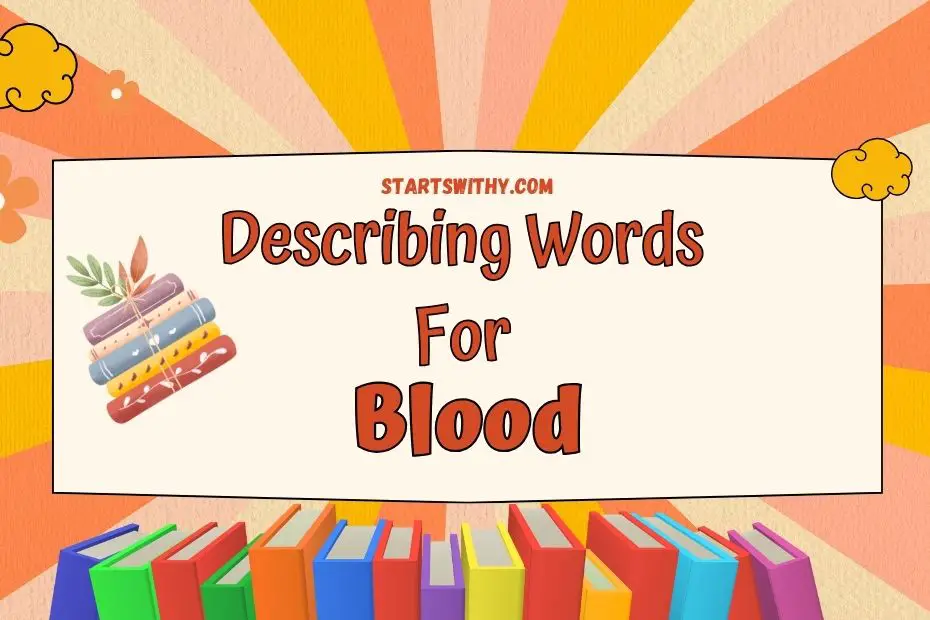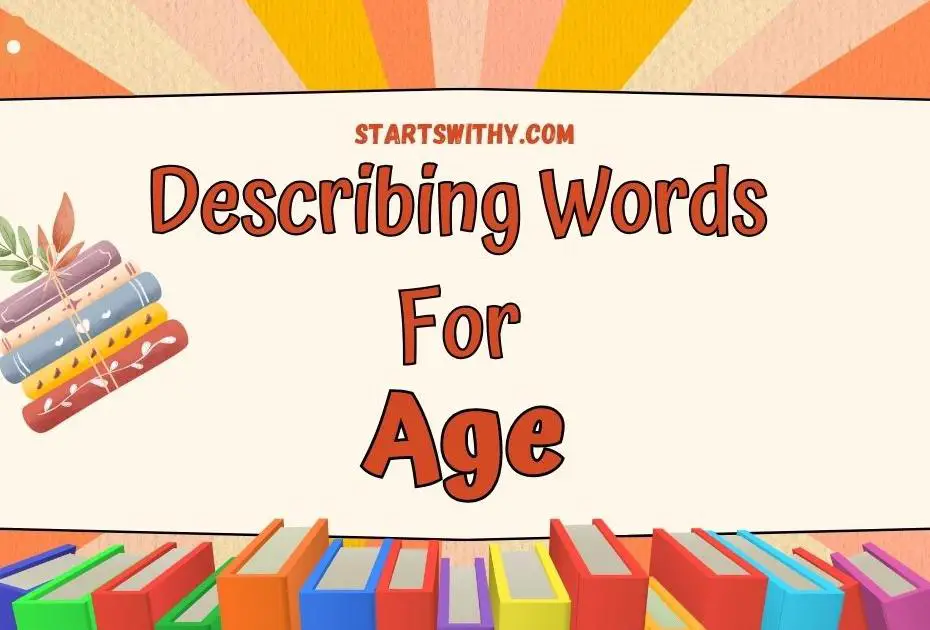Ever wondered how to sprinkle a little magic into your sentences? It’s all about the adjectives, those descriptive powerhouses that bring your words to life. I’m here to guide you through the art of using adjectives effectively, ensuring your phrases pop off the page.
Whether you’re penning a novel, crafting an email, or updating your blog, mastering adjectives can transform your writing from mundane to magnificent. Let’s dive into the nitty-gritty of adjective placement and selection, so you can communicate with clarity and style.
The Importance of Adjectives in Writing
Adjectives play a crucial role in writing, especially when I’m aiming to introduce young minds to the wonders of language. As a blogger who regularly crafts content for an audience that includes kindergarten and preschool teachers, I understand their need for clear and accurate language to teach children. Adjectives don’t just add flair; they serve as the essential building blocks that help kids grasp the essence of what’s being described.
When teaching, I’ve noticed that adjectives form the gateway to helping kids expand their vocabularies. They’re the color in a painter’s palette; without them, stories and descriptions would be merely black and white. I leverage adjectives to paint vivid pictures in young learners’ minds, helping them to understand and describe the world around them.

Here’s how these descriptive words serve their purpose:
- Heighten Sensory Experience: Adjectives can transform simple statements into rich sensory experiences. For example, the sentence “The cat sits on the mat” becomes more evocative when modified to “The fluffy cat sits on the checkered mat.” Suddenly, children can visualize and almost touch the softness of the cat and the pattern of the mat.
- Convey Emotion: Words like ‘joyful,’ ‘gloomy,’ or ‘excited’ immediately convey the emotional landscape behind a sentence. When I mention “The joyful teacher greeted her students,” there’s an instant mood set for the scene.
- Clarify and Specify: By using adjectives like ‘five,’ ‘blue,’ or ’round,’ I can help children understand quantity, color, and shape, respectively. These descriptors are essential in the real world and in the classroom.
- Boost Creativity: Encouraging kids to use adjectives can also boost their creativity. When they learn to describe a ‘majestic castle’ or a ‘sparkling river,’ their own storytelling skills are enhanced.
Cognitively, adjectives stimulate a child’s brain, encouraging them to think critically about words and their meanings. I’ve found that exercises involving adjectives not only build vocabulary but also improve memory and attention to detail.
Instilling a love for descriptive language early on sets children up for success in both communication and creative expression. That’s why I’m dedicated to providing content that illustrates the effective use of adjectives, tailored to the needs of educators who shape young minds every day.
Tips for Choosing the Right Adjective
When guiding young learners through the vast landscape of descriptive language, I’ve come to realize the importance of selecting adjectives that are not just accurate, but also capture a child’s imagination. In the classroom, I always remind my fellow educators that simplicity reigns supreme. Here are a few key strategies I employ to make adjective learning both effective and fun for kids.

Start with the Senses: Encouraging children to describe what they see, hear, taste, touch, and smell offers a solid foundation for understanding adjectives. I suggest we:
- Use tangible examples like a soft bunny or a loud bell.
- Integrate sensory bins in lessons for hands-on exploration.
- Create vivid word walls that children can refer to during activities.
Avoid Overwhelming Choices: When I present adjectives to my class, I’ve seen the best results with a focused list, rather than an expansive one. Limiting options helps children to:
- Quickly grasp the meaning of each word.
- Avoid confusion between similar adjectives.
- Build confidence as they successfully use these words in sentences.
Incorporate Real-Life Connections: Real-world applications enable kids to relate better to the adjectives they’re learning. I often:
- Connect adjectives to students’ everyday experiences, like crunchy cereal or sparkling snow.
- Use storytime to highlight descriptive words in context, reinforcing their understanding.
Promote Creativity: While it’s vital to ensure that kids comprehend the basic meaning of an adjective, I also nurture their creative expression by:
- Encouraging them to come up with their own descriptive sentences.
- Suggesting they illustrate the adjectives, blending art with language learning.
Repeat and Reinforce: Repetition is a cornerstone of memory retention. Therefore, I make a point of revisiting adjectives in various activities. I’ve found that including adjectives in songs, poems, and stories embeds them deeper into a child’s lexicon.
Above all, teaching adjectives should be a delightful exploration that enhances a child’s ability to communicate effectively and creatively. By sprinkling these descriptors throughout our interactions, we’re not just teaching them words—we’re opening doors to new ways of seeing and understanding their world.
Using Adjectives to Create Vivid Descriptions
Choosing the right words when teaching young minds is critical. I aim to breathe life into everyday objects and experiences by using adjectives that draw a clear picture in a child’s mind. When I talk about a ‘gigantic, towering tree,’ I can see their eyes widen as they imagine a tree stretching up to the clouds. It’s about painting with words.
A recent lesson involved describing a ‘grumpy, growling dog’. We focused on the mood and sound, helping the children visualize not just any dog, but a specific character through these descriptors. I notice that kids respond positively when adjectives convey emotions or sounds, as these are experiences they can relate to.
Crafting Engaging Stories with Adjectives
The key to a compelling story is how vividly it’s told. Simple sentences like ‘The cat sat on the mat’ transform with the addition of adjectives. A ‘fluffy, striped cat sprawled lazily on the sun-warmed mat’ immediately builds a more complete story. I encourage the children to immerse themselves in an adjective-rich narrative, allowing them to expand their world through language.
Using Adjectives to Compare and Contrast
I find comparison-based activities equally important. For instance, discussing ‘a ripe, juicy apple’ versus ‘a sour, green apple’ introduces contrast. This way, not only do children learn new adjectives, but they also start to understand the nuances of comparison.
Tailoring Adjective Use to Each Child
Every child’s understanding and expression are unique. I tailor my adjective use to each child’s level of development, ensuring that terms are neither too simple nor too complex. For a child fascinated by insects, adjectives like ‘iridescent beetle’ could be more engaging than just ‘colorful bug’.
I weave adjectives into games and interactive activities, often using props and visual aids so that children associate words with tangible objects. They are more likely to remember the ‘velvety texture of a leaf’ or the ‘fragrant smell of a flower’ when they can touch and smell as they learn.
Adjective selection is a strategic process requiring thought and attention to each child’s learning progress. As they grow more comfortable with their descriptive words, I gradually introduce more complex adjectives, expanding their vocabulary and their ability to express themselves.
Placing Adjectives for Maximum Impact
When teaching young minds the power of description, it’s pivotal to show them how the placement of adjectives can drastically alter the impact of a sentence. Positioning is more than a grammatical rule; it’s a tool to paint mental images. Kids are intuitive learners; by demonstrating how adjectives can color their phrases, we enable them to communicate with clarity and emotion.
I’ve found that the most impactful place for an adjective is immediately before the noun it describes. This standard positioning helps children create a direct link between the object and its attributes. Take for example the phrase “a fluffy cat.” The adjective ‘fluffy’ gives an instantaneous sensory detail that allows a child to visualize and even ‘feel’ the cat’s fur.
Sometimes, to emphasize or add flavor, adjectives can be placed after the verb to be, as in “the cat is fluffy.” This structure foregrounds the cat as a subject before introducing the characteristic, which can be useful when the context has already been set or when I’m drawing attention to a particular quality.
Moreover, placing multiple adjectives in order requires a touch of finesse. I teach kids to use a prescribed order of adjectives before a noun. This order often starts with opinion, size, age, shape, color, origin, material, and then purpose. A “lovely small old rectangular green French metal traveling trunk” is an extreme example but it showcases how adjectives build up a detailed picture.
| No. | Adjective Order |
|---|---|
| 1 | Opinion |
| 2 | Size |
| 3 | Age |
| 4 | Shape |
| 5 | Color |
| 6 | Origin |
| 7 | Material |
| 8 | Purpose |
For effective teaching, I intersperse games and activities that challenge children to describe objects around them, asking them to consider which adjective makes the most impact when placed in different positions. This active engagement with language cultivates a deeper understanding of how their word choices can conjure vivid imagery and become a bridge to expressive communication.
Incorporating Adjectives into Different Types of Writing
When teaching young learners, it’s crucial to demonstrate the versatility of adjectives across various genres. In a narrative, adjectives breathe life into stories, painting vivid pictures that captivate a child’s imagination. Let’s say I’m telling a tale about a little dog. Calling it a “small, brown dog” might get a nod, but describe it as a “tiny, chocolate-furred companion” and suddenly, the room’s attention is all mine.
In instructional writing, adjectives serve to clarify and specify. When giving directions, for instance, the importance of an adjective cannot be understated. If we’re crafting, the difference between using a “long strip of paper” versus a “strip of paper” can mean the difference between success and a craft gone awry.
Descriptive writing, however, is where adjectives truly shine. They are the colors on a teacher’s palette, turning simple descriptive tasks into robust exercises in creativity. When children describe their favorite park, encouraging them to think in terms of adjectives transforms “I like the park” into “I adore the sprawling, green oasis buzzing with life.” Such exercises not only expand their vocabulary but foster an appreciation for the nuances of language.
Even within expository texts, where information reigns, adjectives help to distinguish the mundane from the compelling. Imagine teaching the concept of habitats. Would it not be more intriguing to learn about the “humid, lush rainforest home to chattering parrots” than a “rainforest with parrots”? Surely, the former paints a more evocative scene.
What’s important to note is that the placement and choice of adjectives should always enhance, never confuse. A well-placed adjective can make all the difference in grounding concepts and sparking interest in young minds. Through mindful integration into different writing styles, I ensure that the children not only grasp adjective usage but also relish the enrichment they bring to language.
Conclusion
Mastering the art of adjectives isn’t just about expanding vocabulary; it’s about enriching communication. I’ve shared insights on selecting impactful adjectives and their strategic placement to captivate and educate. Remember, whether you’re weaving a vivid narrative, giving precise instructions, painting with words in descriptive pieces, or presenting facts in expository writing, adjectives are your allies. They’re the spice in the stew of language, turning the mundane into the extraordinary. Use them wisely and watch your sentences come alive, engaging the young minds you’re aiming to inspire.



